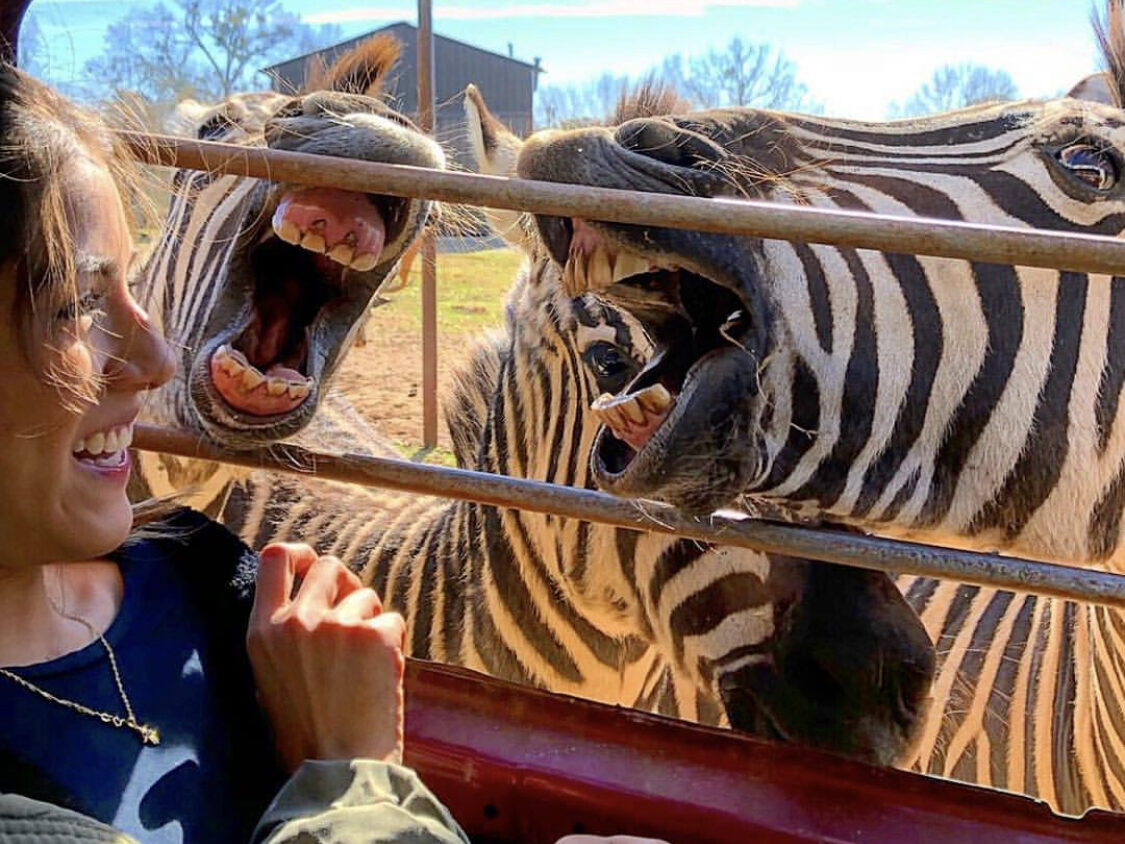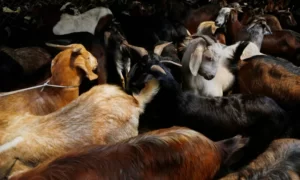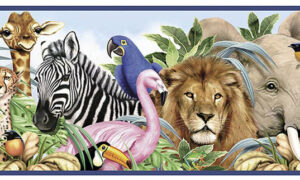Wild Animal Safari – Unveiling the Thrilling Adventure of Exploring Wildlife
Are you ready for an unforgettable journey into the heart of the wilderness? A wild animal safari promises an exhilarating experience, where you can witness nature’s most extraordinary creatures up close. In this article, we will delve into the captivating world of wild animal safaris, explore popular destinations, encounter the magnificent Big Five, discuss various types of safaris, and provide essential tips for an awe-inspiring adventure.
Introduction
Embarking on a wild animal safari is like stepping into a realm where the untamed beauty of nature reigns supreme. It offers an unparalleled opportunity to observe and interact with wildlife in their natural habitats. Whether you are a nature enthusiast, wildlife photographer, or simply seeking an extraordinary adventure, a safari promises an adrenaline rush like no other.
What is a Wild Animal Safari?
A wild animal safari is an expedition that takes you deep into the wilderness to encounter a diverse range of wildlife species. These safaris are usually conducted in national parks, game reserves, or private conservancies, where animals roam freely in their natural habitats. Safaris provide a unique chance to witness animals such as lions, elephants, leopards, rhinos, and buffalos in their undisturbed natural environment.
Popular Wild Animal Safari Destinations
African Safaris
Africa is synonymous with wild animal safaris, offering some of the most iconic and breathtaking wildlife destinations. Countries like Kenya, Tanzania, South Africa, and Botswana boast vast savannas and diverse ecosystems that support an abundance of wildlife. The Serengeti National Park, Masai Mara, Kruger National Park, and Okavango Delta are just a few examples of African safari hotspots.
Asian Safaris
While Africa takes the spotlight, Asia is also home to incredible safari experiences. Countries like India, Sri Lanka, and Nepal offer opportunities to explore dense jungles and encounter elusive big cats such as tigers and leopards. The Periyar Tiger Reserve, Yala National Park, and Chitwan National Park are renowned for their captivating wildlife encounters.
South American Safaris
South America’s rainforests and vast wetlands present a unique backdrop for safaris. The Amazon rainforest in Brazil, the Pantanal in Brazil and Bolivia, and the Galapagos Islands in Ecuador are just a few of the remarkable destinations where you can observe an array of exotic creatures, including jaguars, caimans, and colorful bird species.
The Big Five: Must-See Animals on a Safari
When venturing on a wild animal safari, the Big Five are often the most sought-after animals to spot. These majestic creatures include:
Lion
Known as the king of the jungle, the lion is an emblem of power and beauty. Witnessing a pride of lions in their natural habitat is a mesmerizing sight, as they showcase their strength and regal presence.
Elephant
The gentle giants of the savanna, elephants, leave a lasting impression. Their massive size, intelligent behavior, and intricate social structures make them fascinating to observe and photograph.
Cape Buffalo
The Cape buffalo is one of Africa’s most dangerous animals. With their impressive horns and imposing presence, encountering a herd of these magnificent creatures can be both thrilling and awe-inspiring.
Leopard
The elusive leopard is a master of camouflage, blending effortlessly into its surroundings. Spotting a leopard in the wild is a rare privilege, as they gracefully traverse the treetops or stalk their prey with unmatched stealth.
Rhino
Rhinos, with their prehistoric appearance and armored bodies, are a testament to the resilience of wildlife. Their dwindling numbers make every encounter with these gentle giants even more significant.
Types of Wild Animal Safaris
Wild animal safaris offer various ways to explore the wilderness and encounter wildlife. Some popular safari types include:
Jeep Safari
Jeep safaris are a classic way to navigate through the wilderness. Riding in an open-top 4×4 vehicle provides excellent visibility and allows you to cover vast distances while enjoying the company of an experienced guide.
Walking Safari
For a more immersive experience, a walking safari allows you to explore on foot, accompanied by knowledgeable guides. Walking safaris provide a deeper connection with nature, allowing you to appreciate the intricate details of the ecosystem and witness smaller wildlife up close.
Boat Safari
In water-rich habitats like rivers, deltas, or coastal areas, a boat safari offers a unique perspective. Glide silently along the waterways, spotting a wide variety of birdlife, hippos, crocodiles, and other animals that thrive in these aquatic environments.
What to Expect on a Wild Animal Safari
When embarking on a wild animal safari, there are several aspects to anticipate:
Game Drives
Game drives are the heart of a safari experience. Led by expert guides, these drives take you into the wilderness, following animal tracks and seeking out incredible wildlife sightings. Early mornings and late afternoons are prime times for game drives when animals are most active.
Expert Guides
The expertise of safari guides is invaluable. Their knowledge of animal behavior, flora and fauna, and the local ecosystem enhances your safari experience. They can track animals, share captivating stories, and ensure your safety throughout the journey.
Wildlife Interactions
While on safari, you may witness captivating wildlife interactions, such as a lioness teaching her cubs to hunt or elephants playfully splashing in a watering hole. These encounters offer a glimpse into the intricate dynamics of the animal kingdom.
Accommodations
Safari accommodations range from luxurious lodges to tented camps, providing comfort and immersion in the wilderness. Some lodges even offer the opportunity to view wildlife from your room, allowing for an unforgettable and intimate experience with nature.
Tips for a Memorable Wild Animal Safari
To make the most of your wild animal safari adventure, consider the following tips:
Pack Appropriately
Pack lightweight, neutral-colored clothing, comfortable walking shoes, a wide-brimmed hat, sunscreen, insect repellent, and binoculars. A camera with a telephoto lens will allow you to capture stunning wildlife photographs.
Follow Safety Guidelines
Always adhere to the instructions and safety guidelines provided by your guides. Respect the animals’ space and maintain a safe distance. Remember, you are a guest in their home, and their well-being should be a priority.
Be Respectful of Wildlife
Observe animals quietly and avoid sudden movements or loud noises that may startle or disturb them. Remember, you are a spectator in their natural environment, and minimizing your impact is crucial for their well-being.
Capture Memories Responsibly
When photographing or filming wildlife, prioritize ethical practices. Do not interfere with the animals or their habitats for the sake of a photo. Respect the guidelines set by your guides and the park authorities.
Conservation Efforts in Wild Animal Safaris
Wild animal safaris play a significant role in conservation efforts. Through sustainable tourism practices and the support of local communities, these safaris contribute to the preservation of wildlife and their habitats. Revenue generated from tourism helps fund conservation projects, anti-poaching initiatives, and education programs aimed at raising awareness about the importance of wildlife protection.
Conclusion
A wild animal safari is an adventure that awakens your sense of wonder and appreciation for the natural world. It offers an opportunity to witness breathtaking landscapes, encounter magnificent animals, and create memories that will last a lifetime. As you immerse yourself in the wilderness, remember to respect the animals, follow safety guidelines, and capture memories responsibly. Let the thrill of a wild animal safari ignite your passion for wildlife conservation and leave a positive impact on the environment for future generations to enjoy.
FAQs
Is it safe to go on a wild animal safari?
Yes, wild animal safaris are generally safe when conducted by reputable tour operators and followed by safety guidelines. It’s important to listen to your guides, maintain a safe distance from wildlife, and respect their natural behavior.
What is the best time of year to go on a safari?
The best time for a safari varies depending on the destination and specific wildlife sightings you wish to experience. Research the seasons and migration patterns of animals in your chosen safari location to determine the ideal time for your visit.
How long does a typical safari last?
The duration of a safari can vary from a few days to a couple of weeks. It’s advisable to plan for at least three to five days to have a fulfilling wildlife experience. Longer safaris allow for a more comprehensive exploration of the area.
Can children participate in safaris?
Many safari destinations welcome children, but it’s essential to check the age restrictions and guidelines of the specific safari operators and accommodations. Some places may have age restrictions for certain activities or recommend minimum age limits for safety reasons.
Are there any age restrictions for safaris?
Yes, some safaris may have age restrictions for safety reasons. It’s important to check with the safari operator or accommodation provider beforehand to ensure that the activities and experiences are suitable for your age group.
Read More:Animals and Humans: Exploring the Connection




















